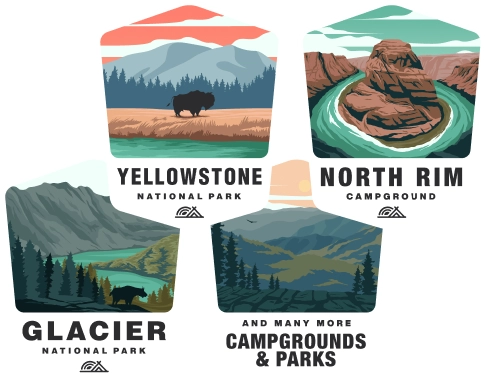Camping at Oasis
Introduction
It's essential to clarify whether we're discussing camping at a specific Oasis, as "Oasis" could refer to numerous locations across the globe, being a general term for any fertile area in a desert. An Oasis could also potentially be a campground that has adopted the name. Without specific regional information, providing accurate guidance is challenging. However, I'll supply general important information that could pertain to camping in an area referred to as an "Oasis."
Location and Accessibility
Check the Specific Location:
- Research the Oasis you plan to camp at; it could be a desert area or a designated campground.
- Look for maps and directions on how to get there.
Accessibility:
- Understand the types of road access (4WD tracks, paved roads).
- Determine if there is public transport or if you need a private vehicle.
Climate and Terrain
Desert Environment:
- Deserts have extreme temperature variations.
- Daytime can be excessively hot while nights may be very cold.
Terrain:
- Oasis terrain could be sandy, rocky, or have vegetation.
- Bring appropriate gear (sand pegs, rock pegs).
Permits and Regulations
Camping Permits:
- Determine if you need a permit to camp in the area.
- Reserve your spot if the oasis is a popular camping site.
Local Regulations:
- Check fire regulations and waste disposal rules.
- Understand wildlife protection laws and guidelines.
Water and Resources
Water Supply:
- While an oasis usually has water, verify if the water source is reliable and potable.
- Bring water purification methods (filters, tablets).
Food and Necessities:
- Bring sufficient food, as oases might not be close to supply stores.
- Pack necessary camping gear including shelter, sleeping bag, and cookware.
Safety Considerations
Emergency Preparations:
- Know the location of the nearest medical facility.
- Bring a first-aid kit and emergency communication device.
Wildlife Encounters:
- Research potential dangerous wildlife in the area.
- Have knowledge of how to handle wildlife encounters safely.
Cultural Sensitivity
Respect the Local Community:
- If the oasis is part of indigenous land or local community, understand customs and permissions.
- Some oases may have cultural or historical significance.
Environmental Protection
Leave No Trace:
- Practice Leave No Trace principles to minimize your impact on the environment.
- Pack out what you pack in and leave the oasis as you found it.
Activities and Attractions
Recreational Opportunities:
- Hiking, bird watching, or photographing the unique oasis landscape may be available.
- Some oases may offer opportunities for swimming or boating.
Local Attractions:
- Explore local attractions including any historical sites or unique geological features.
- Engage in guided tours if available to learn more about the oasis ecosystem.
Before planning your camping trip, please seek the most current and detailed information about the specific Oasis you wish to visit. Regulations, conditions, and services can change, so verifying up-to-date data with local authorities or park management can ensure a safe and enjoyable experience.
